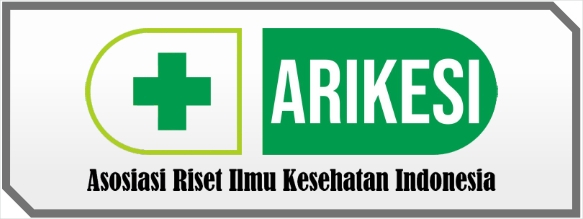Pola Peresepan Obat Diare Pada Balita di Rawat Jalan Rumah Sakit Khusus Ibu dan Anak Sadewa Periode Januari – Juni 2022
DOI:
https://doi.org/10.57213/tjghpsr.v1i4.118Keywords:
Prescribing patterns, Diarrhea, ToddlersAbstract
Diarrhea is a condition in which a person has bowel movements with a soft or liquid consistency, it can even be just water and the frequency is more frequent in one day. Diarrheal disease in toddlers is ranked 2 out of the top 10 childhood diseases at the Sadewa Mother and Children Hospital (RSKIA) in May 2022. Knowing the pattern of prescribing diarrhea drugs in toddlers in outpatient care at the Sadewa Mother and Children Hospital for the period January - June 2022. The research conducted was a non-experimental descriptive research with a retrospective method. The study was conducted by taking prescription data from electronic medical records at the Sadewa RSKIA pharmacy and then recording them on a data collection sheet. Data were analyzed using tabulations in the form of percentages (%). The results showed that out of 130 samples, the profile of diarrhea patients under five was dominated by males, 77 children (59%), aged 2-3 years 65 children (50%), and the degree of dehydration of patients without dehydration, 120 children (92%). ). The most widely used drug class was zinc with 120 prescriptions (34.3%), zinc has a protective effect against diarrhea and can reduce recurrence and probiotics with 119 prescriptions (33.8%), probiotic bacteria will help the process of nutrient absorption and prevent disturbances in water absorption. The dominating combination was a combination of 3 drugs namely electrolytes, zinc and probiotics 69 prescriptions (57%), oralit functioned to replace fluids and electrolytes in the body that are wasted during diarrhea, zinc supplementation and probiotics in diarrhea effectively reduced stool output. The rule for using the treatment of diarrhea in toddlers is mostly 1 time a day with a total of 132 drugs (37.7%). The dominating drug was zinc with 117 prescriptions (88.6%) The pattern of prescribing diarrhea drugs in toddlers in this study was dominated by male patients, aged 2-3 years with a degree of dehydration, patients without dehydration. The most widely used drug classes are zinc and probiotic groups. The most common drug combination found is a combination of 3 drugs, namely electrolyte, zinc and probiotic group drugs. The rule for using the treatment of diarrhea in most toddlers is 1 time a day.
References
Ambarwati, R., Ratnasari, N. Y., & Purwandari, K. P. (2018). Gambaran Tingkat Pengetahuan dan Sikap Ibu Terhadap Kejadian Diare Pada Anak Di Puskesmas Tirtomoyo 1 Wonogiri. Jurnal Keperawatan GSH.
Anonim. (2011). Panduan Sosialisasi Tata Laksana Diare Balita, Kementrian Kesehatan RI Direktorat Jenderal Pengendalian Penyakit dan Penyehatan Lingkungan.
Departemen Kesehatan RI. (2011). Buku Saku Diare Edisi 2011. Jakarta: Departemen Kesehatan RI.
Fentami Nissa A, dkk. (2019). Gambaran Penggunaan Obat Diare pada Pasien Balita dengan Diare Akut yang Dirawat Inap di RSUP Persahabatan. Jurnal Archives Pharmacia Volume 1.
Hasanah A, Hidayati N, Kunaedi A. (2021). Profil Penggunaan Obat Antidiare Pada Balita Di Puskesmas Lurah Cirebon Periode Bulan Januari – Desember 2019. Journal of Pharmacopolium, Vol. 4, No. 1.
Kementerian Kesehatan RI. (2022). Profil Kesehatan Indonesia 2021. Jakarta: Kementerian Kesehatan RI.
Korompis F, Tjitrosantoso H, Goenawi LR. (2013). Studi Penggunaan Obat pada Penderita Diare Akut di Instalasi Rawat Inap BLU RSUP Prof. DrR. R. D. Kandou Manado Periode Januari-Juni 2012. Pharmacon Jurnal Ilmiah Farmasi - UNSRAT.
Jawi, I. M. (2014). Konggres Nasional VI Perhimpunan Gastrohepatologi dan Nutrisi Anak Indonesia (PGHNAI). Konggres Nasional VI Perhimpunan Gastrohepatologi Dan Nutrisi Anak Indonesia (PGHNAI).
Manoppo, Christie. (2010). Dampak Pemberian Seng dan Probiotik terhadap Lama Diare Akut di Rumah Sakit Prof. DR. RD. Kandou Manado, Bagian Ilmu Kesehatan Anak, Fakultas Kedokteran Universitas Sam Ratulangi, Jurnal Sari Pediatri Vol.12, No. 1 Manado.
Permenkes RI nomor 137 tahun 2014 tentang Standar Nasional Pendidikan Anak Usia Dini. Jakarta:Depkes RI:2014.
Sugiyono. (2009). Metode Penelitian Kuantitatif Kualitatif dan R&D. Bandung: Alfabeta
Yusuf Rezky A, dkk. (2023). Faktor Yang Berhubungan Dengan Kejadian Diare Pada Anak Usia 1-4 Tahun Di Puskesmas Antang.Window of Public Health Journal, Vol. 4 No. 2.













